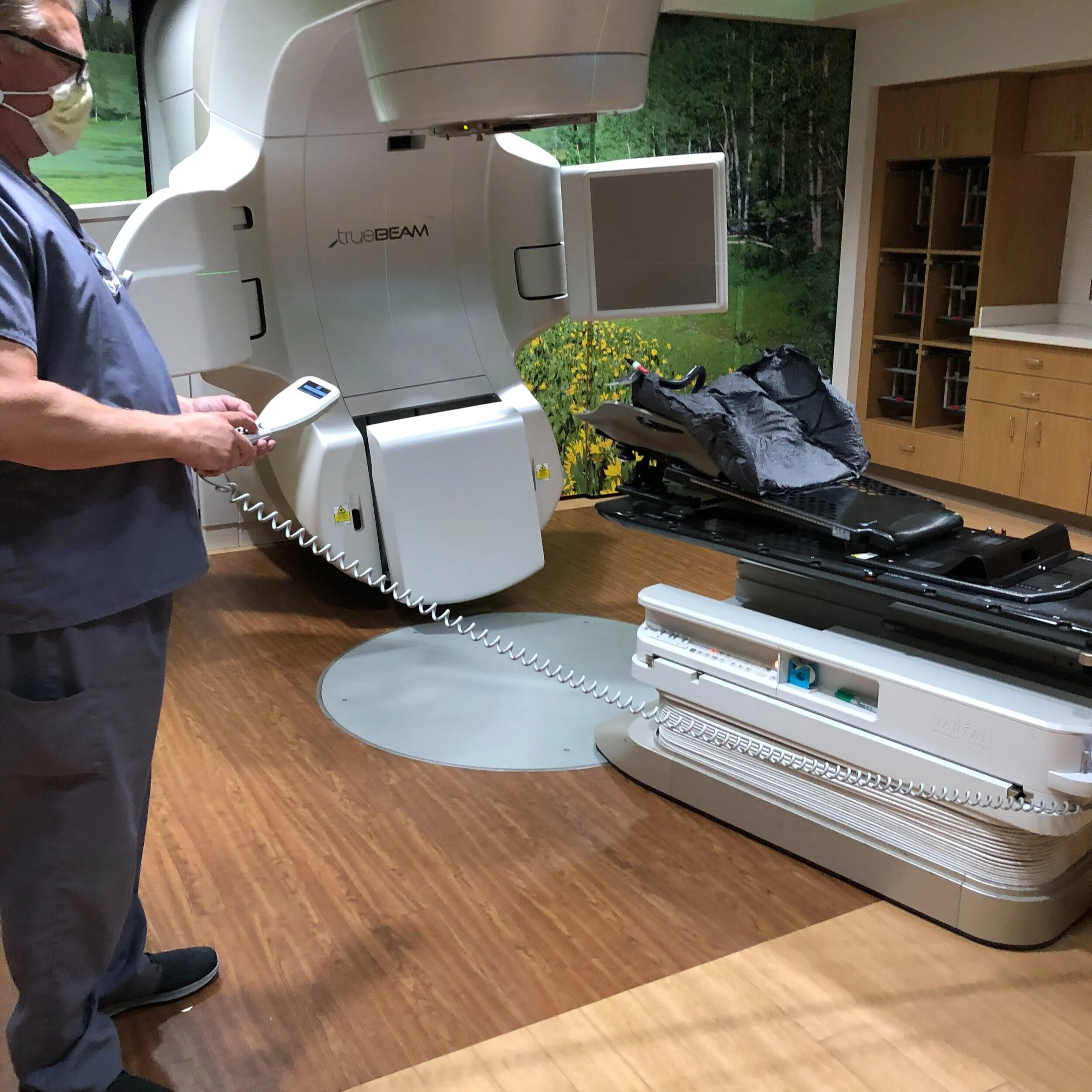A NOTE TO SUBSCRIBERS: SQUARESPACE HAS BEEN HAVING PROBLEMS WITH SOME BROWSERS. IF YOU CAN’T GET MY POSTS ANY OTHER WAY, YOU CAN ALWAYS GO TO fledabrown.com.
It’s tricky to position myself on the radiation table. My knees have to land precisely on the knee-riser, my head has to be nestled in the mold made specifically for me, to hold the position. The two people in the radiology team pull and tug at the sheet under me to align me exactly according to the x on my right breast and the laser beam. Then they leave the room, shut the door. I am alone with a semi-alive robot. The circular apparatus above me moves around to position itself. Another, rectangular, apparatus moves also, coming directly over me, pausing a while, then moving away.
Some of this happens with no sound. Nothing is going on but positioning. Then the red signs at either side of the room light up: BEAM ON. They stay on for maybe 20 seconds. Invisible rays are busily mangling, murdering, the very DNA I’m made of. Wiping out any stray fast-replicating cells that the surgery might have missed.
On my back for those few minutes, I become acutely aware of the room. Around the ceiling there are strips of colored lights, a different color on each side of the room, around the ceiling, as if I were in the Detroit airport. Entirely decoration, I think. A distraction. Two feet above me the circular machine rotates, moves to the side, almost out of my vision, then to the other side. Thin green laser beams inscribe across my breast the correct positions. Then the whole bed rotates! I am captured at several precise angles, then zapped. Then the door opens. It’s over. Again.
You know the jokes about tourists visiting the Grand Canyon and spending all their time taking pictures of it instead of Being There? The more worthy reaction, one assumes, is just to take it all in. To fully “experience” it. But.
Not a butterfly. A mushroom. An example of one of Kim’s stunning photographs.
I was studying the room, the machine, from the point of view of a writer. I knew I wanted to tell you about it. My observation was considerably sharpened by my wanting to remember my seeing, to find words for it. I think of my friend Kim, a dazzlingly good nature photographer. Her photos teach me to see. They are her way of teaching herself to see more closely, to notice the difference in the tiny Silver-bordered Fritillary butterfly and the Atlantis Fritillary.
My take on this: all artists and musicians are watching and listening for the changes, what’s different, what makes this uniqueness. Writers, equipped with only words to convey all this, need a large vocabulary to pick up the nuances, in the same way that many pixels are necessary to get a good picture.
So I don’t think it’s necessary to apologize to ourselves or others for writing in our heads when we might be “taking it all in.” It’s kind of a double life we writers live. We live. We lie on the table and get zapped. Meanwhile, we’re working at saying what it’s like, as closely as we can.
If it’s poetry we’re talking about, we try to find a combination of words that move us beyond words. As, for example, standing at the edge of the Grand Canyon, that vertigo-feeling, that sense of falling in the mind. Another advantage: the poet Delmore Schwarz said that “One can not carry a mountain, but a poem can be carried all over.”
P.S. I was interviewed recently about Mortality, with Friends, for a podcast from the Ferndale (MI) library. I think it is an exceptionally good interview, about 30 minutes long. I’ll put the link here.
https://alittletooquiet.podbean.com/e/fleda-brown-mortality-with-friends/


